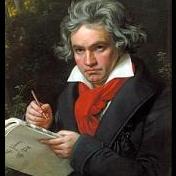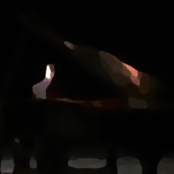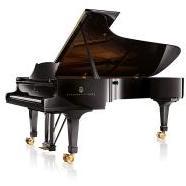Search the Community
Showing results for tags 'duet'.
-
Hi guys, this is the first (complete) piece I have composed. It was inspired by the painting "The Raft of the Medusa" by Théodore Géricault, which I found whilst I was surfing the internet for inspiration. I'm hoping to use it as part of a larger work later on, but here it is as it stands. The piece is in ternary form (A-B-A), with the A section being in G minor, and the B section being in the Dominant(D Major). The A Section is supposed to invoke the dispair that the sailors on the raft must've felt as they were sailing, and their cries for help. The B section is supposed to be some sort of cheer up song, that the sailors sing (and waltz to), to try and cheer themselves up. Eventually, the despair and pain of their ordeal overwhelms them, and they stop singing, and start crying for help again, hence the repeat of the A section. I do hope you enjoy my piece, and I would appreciate some feedback on it, Yours Faithfully, Expert21 P.S. I apologise in advance for some of the discrepancies in the notation, I hope to fix it when I have more time.
- 5 replies
-
- 1
-

-
- violin and piano duo
- duet
-
(and 2 more)
Tagged with:
-
I've just finished a new piece today! Here's a waltz that I had written for a competition (I didn't submit in the end, the entry fee was too costly), in Ab major. At first I had planned for it to have been for solo piano (inspired very much by Chopin's waltzes), but eventually I added a solo violin part for (at least some) more timbral variety. Would appreciate some good criticism: this the first waltz I've written, and also the first in my (obviously limited) oeuvre to 'explore' the circle of fifths. Hope you enjoy, and let me know what you think! 🙂
-
1. Playtime link This is the first movement of six for a string quartet. The entirety of the piece is based on the relationship of four siblings as they grow up, each instrument representing a sibling. The first movement is the birth of the two eldest, hence it being simply a duet. I would love feedback on it and how to make it better. Is it too short? Does it end too abruptly? Does it need more of a recurring theme or melody than it has?
- 1 reply
-
- classical
- string ensemble
-
(and 3 more)
Tagged with:
-
I'm composing this piece for a challenge where the challenge is to compose a romantic piece(romantic in the sense of love, not necessarily the era). What I think about when I think about romantic love is a complicated process that starts with sudden desire(pickup in momentum in the cello leading to harmonization in sixths is what I did to try to get that across), a friendly stage with exchanges, a lot like a friendship but deeper(this is what I'm at now in my piece, an exchange of 2 motives between the flute's motive from the first theme and a second motive in the cello, like 2 people exchanging ideas and seemingly a state of agreement(acceleration towards the cadence in both motives)), a state of anger and not wanting to be with the other person, and a final calming realization phase when true love is reached. This fits well with Sonata Form and so my piece is probably going to end up in Sonata Form, just unconsciously, because of the associations with the start of a romantic relationship. And Flute and Cello are 2 of my favorite instruments. I can't say that I have a favorite woodwind though, they are all great, except maybe the Recorder. But the Cello is my favorite string instrument. Yes, I know, the flute motive slowly shifts across the beats of 4/4 in the first 10 bars. That metric shift just kind of naturally arised from me developing the motive into the flute dominant First Theme. I am stuck though at the cadence in the next 8 or 9 bars. It feels like the Cello wants to continue rising in pitch as does the Flute, as well as accelerate even further to the cadence. But I'm not sure what to do. It's mainly the Cello I am concerned about. It's approaching treble register pitch and the treble register is hard, even for an experienced cellist(Eb4 is not that far off from G4, the note at which I would consider possibly putting the cello in Treble Clef). Right away you might be like: to which I would be like: So, what do you think of my piece so far? Any advice regarding the acceleration to the cadence? Are the 32nds in the Cello motive too fast?
-
Finale 2014.5 with Noteperformer
-
This is a piece I started composing last night after listening to String Duo for Violin and Cello in D major by Haydn. I felt like composing a piece in B minor for some reason, don't know why, maybe because I haven't really used B minor all that much in 3 years of composing. But as I started listening to it, it sounded more to me like a slow second movement than an isolated work. But what piece would have a slow movement in a minor key outside of the exceptions like Moonlight Sonata where the slow movement is the first movement and suites where the key relations aren't necessarily close? What I'm composing seems to be more like the slow movement of a sonata than a suite. I mean for one thing, piano sonata slow movements do tend to have this 2 melodies thing(bass clef melody as well as treble clef melody) that is certainly in my piece. And from all my experience listening to both solo and duet sonatas, not once have I heard a minor key second movement, although such a sonata probably exists. Anyway, what do you think of it so far? Starting at measure 12, I have a cello solo, as you can probably tell by me going into tenor clef for more than just a few bars and how high up in tenor clef it gets. I don't think the violin will just wait until the solo is finished, but I do want to give at least 1 measure to just the cello before I bring the violin back in in its low register and in more of the melodic bass role the cello had before the solo. I might change the "in B minor" part of the title if I do decide to go full on sonata with this piece. I might even change "String Duo" to "Duo Sonata for Violin and Cello" if I do that.
-
https://flat.io/score/5ef0da584830d811e3e3737a-a-world-of-ecstasy
-
Good evening! Here is a short woodwind duet in sonata form I wrote a few years ago with a new video on YouTube, hope you like it! YouTube video
-
A short piece for violin and piano 🙂 Sounds very classical. I also got a little limited by my poor knowledge of keyboards… One has to practice … 😉
-
Hi forum 🙂 A short attempt at a duet between a tuba and a violin...Duo pour tuba et violon.pdf
-
Hi all 🙂 Just wanted to give it a try to a duet between a recorder and a cello... Here it is ☺️
-
I like to introduce myself with poems. And a cape. But nobody can see my cape here so just forget I said anything. It is not malice, that the Gods should reward our prayers with mere images- for they must draw shadow hearts aloft, hearts that must die, hearts that stir in images only, hearts for which no vision at last fulfilled might prove inspiring, and want to glimmer only around the edges of things. It is not malice, that the gods please our hearts and not our souls, unless one speaks to the gods from their soul, and most souls do not pray, and hardly speak at all for the heart bears no malice. -- Pindar Pythian III. If one is to bear malice against the Gods and their cold silence toward our prayers, do so with the soul and bless them with the heart, and if that malice were to speak, one should reserve such speech for music I think. I was not sure where to place my post, however, considering I have a mix of general and more specific ideas as well as compositions themselves, I landed here. To be blunt, I'm an extreme isolate, having spent the last 14 years cloistered in my home, unrepentant of my dramatic reclusion, agoraphobia and likely even more extensive pathology while adopting an equally isolating mode of life as far as online interaction is concerned. In that time I have focused on composition a lot and arrived at around 50 or so volumes of compositions, each about 500 pages long, so already, it is a bit of a life's work. I've also arrived at a perhaps- odd personality, or a kind of intensification plainly evinced in my communication, one that naturally comes along with looking inward too incautiously-- one which I ask to be forgiven for in advance, for I now feel compelled to throw a few of these compositions out there as I study the matter and manner of publication, even though, again, I seem to have no sense or talent for social networking or anything of the sort. This appears to be the simplest way of going about it, making a post, that is. Of course I can answer questions about those elements of theory I either made use of or simply invented myself for their construction, and the scores are provided as well, as lengthy as some might be. I mixed the audio with headphones for all of these if that is relevant, I am still learning the audio engineering part which is necessary for me since most of the music I write is symphonic and can't be played by a single person, I must rely on layering audio tracks and on VSTS. To take elements from baroque, Romantic and modern advanced harmony- from modal theory to jazz, while exceeding the formal dimensions and limitations of all these genres and the respective horizons of meaning characterizing their eras in time and their possible relationship to the Divine, which I take music as representing more than any other art-form, I suppose is my guiding principle,- one very similar to Busoni's ideal of the Young Classicism, or junger Klassizität, which aimed at an interfusion of new harmonic and melodic content drawn from advances in modern theory with old, well evinced and dutifully refined forms drawn from the classical tradition. I wanted to include a few small pieces first, which reach about 12-15 minutes at their longest. The rubato capriccio is only four minutes in length, it uses a few elements from the old Spanish La Folia cadence, an erotic bit of delicious Italic decadence to balance my usual preoccupation with capturing the more transcendent feelings when it comes to music. https://audiomack.com/song/parodites/op-21-no-20 The score for this first one, compressed and printed on two staves: https://docdro.id/qz5hDud And expanded across four staves: https://www.docdroid.net/HE3BV4o/op-21-no-21-rev-12-pdf.pdf For the rest, I will provide compressed two-stave reductions since that is how I think musically and actually write: https://audiomack.com/song/parodites/op-33-no-3-cappricio-rubato Score: https://docdro.id/epBbNyQ * Capriccio https://audiomack.com/song/parodites/op-22-no-3-grande-fantaise-sur-thema-de-orpheus https://audiomack.com/song/parodites/op-22-no-6-ossia-and-cadenzas-for-grande-fantaise-sur-de-thema-de-orpheus Score: https://docdro.id/P2M3BbE https://audiomack.com/song/parodites/orpheus-20-mins I like this one but unfortunately the recording skips a little in the first few minutes and in a few other places, these are alternatives for the same, slightly different instrumentation, effects, setup, etc: Mov 1 and Omnibus: https://soundcloud.com/josephchambers/symphony-1-openingIncomplete Mov 2 and 3: https://audiomack.com/song/parodites/orpheusrecording-online-audio-converter-com ^ This one is the first movement from the first of my symphonic fantasies, which I titled Orpheus. Score: https://docdro.id/97EhwW3 https://audiomack.com/song/parodites/op-21-no-44-grande-fantaise-on-symphonic-fantasy-no-3 Score: https://docdro.id/x0CHB7f And then two finished larger-scale symphonic works, which are written in a musical form of my own design, the fantasy-symphony/symphonic-fantaisie, which I will make a few notes on at the bottom of this post: Piano Symphony-fantasia No. 2, Heroic Mov 1-4: https://soundcloud.com/josephchambers/heroicmov1-3 https://soundcloud.com/josephchambers/heroicmov4 Scherzo: https://audiomack.com/song/parodites/op-2-heroic-scherzo Score for the main four movements: https://docdro.id/1o24Lai And the score for its scherzo: https://docdro.id/4UL36L6 Phantasie-Symphony No. 4: https://audiomack.com/song/parodites/op6phansymph4 Score: https://docdro.id/ZowXETy I am formalizing a musical structure around my symphonic-fantasias. There are four 20 minute long movements making up each of them, and each of these four movements is subdivided into 3 movements of its own, or sections really, leaving out recapitulation within the subdivisions in order to establish a ternary formula. The first theme of each movement is a thematic transformation of the one before. So the first theme of the the second movement is a transformation of the theme that started the first. And then in the fourth and last movement, all of these first themes and secondary themes (each second theme is also a transformation of the second theme in the previous movement ) will be combined, arranged, and resolved to one finale. The formal plan is a combination of thematic transformation (Pioneered by Liszt) and recapitulation, ( a staple of the sonata-allegro formalism and the general theory of classical arrangement) the fourth movement serving as a massive recapitulation, as a movement that lends to recapitulation the same weight in the musical argument that the development section possessed formerly. The development section has always had a privileged weight in the literature, because it is process intensive and classical music is obsessed with process, ie. the process of composition and resolution, with introduction and recapitulation having secondary roles. The obsession with process began with the fugue, later evolving into the sonata-form. In the fugue it is most clearly seen: a melody, weak in itself, (in terms of expressive power) is polyphonically textured: the melody in terms of its introductory role in the three divisions of intro, development, and recap, only serves as a basic germ to be explored by the process of composition itself, an exploratory gesture pointing toward the greater analogical mimesis of the longing of longing itself, the longing for longing itself, Augustine's amor amoris or of the "lover in love with love", the deep excess "which survives in the heart of the saints like the worm in fruit", "the god-struck discontent of which man is truly a son", which draws his face to the stars out of longing, though he only gazes upon the stars because he does not know what to long for-- 1 the melancolia permeating all great works in the search for mankind's relationship to the divine, a golden symbol whose exploration these given works above all represent to us. There is in fact greatness to be found in this attitude toward art. However, in Romantic music, we find melodies with incredible expressive power, a power granted by the further development of chromatic coloration and the incorporation of the full harmonic series and those intervals not made truly available to the artistic imagination in Bach's time when the fugue was in vogue. The further development of harmony led to this unavoidable musical problem: if melody is granted this incredible expressive power, how is a melody to serve the purposes of theme, that is, how is a melody to be incorporated into a larger musical text: the purpose of that musical text, of any musical text, whether its architecture is found in the sonata, fugue, etc. is simply to make the melodies complete by developing and finding their place in a greater whole- if they are already complete in themselves, where do we go with them? These Romantic melodies cannot be developed by fugal writing, they cannot be further incorporated in this way into a larger musical argument. Even the sonata form was eventually abandoned, with Liszt advancing the idea of thematic transformation in his Symphonic poems, though it had precedent in Schuber's Wanderer Fantasy, and in Beethoven's unusually lengthy manner of composition. My new symphonic-fantasia is an attempt to develop a structure that allows such melodies to be developed in the context of a larger musical process once again, while lending equal gravity to recapitulation so as not to get fully absorbed into the development sections, like especially happens in Beethoven's development for the Eroica. I might bring further light to the function of the symphonic phantasy with this excerpt of Drabkin's, on the subject of Beethoven's Mass. " It is generally agreed that the music of Beethoven's maturity is among the most highly organized in the repertory of the 18th and 19th centuries, and that the analysis of any work- choral or instrumental- should take into account not only the structure of the individual movements but also the connections between them. Music theory, however, is conventionally concerned with dynamic processes- chord progressions, melodic motion, musical form as movement between regions of instability and stability- and is ill equipped as a theory to determine the conditions under which one can sensibly draw connections between distant points, for example on the basis of thematically similar material. " It is this later matter I am concerned with, that is, creating thematic linkages between the most distant objects in the given musical structure. I suppose that fact, combined with my free interfusion of traditions as varied as Romanticism to jazz, would imply simply: I am searching for a new music, a new harmonic and melodic landscape. 1. Irreverent of my intellectual vanity, I was referencing a few of my own works of philosophy and prose here: To love is to grieve over the loss of something that was never ours. It is a feeling of separation and self-estrangement from something nonetheless unknown and that was never part of us, a feeling of somehow having finally been made whole by being broken apart. It represents that state of inspired displicency so characteristic of man, which leaves him forever the unsatisfied and bereft wanderer of the earth; that state in which the material basis of our desires refutes itself by means of the very abundance of its fulfillment, and in which man grows quite sickened by exhausting his pleasures of their last, sweetened drop. The true scope of that unconscious basis from which we are so estranged, the yearning for which all of life is absorbed as by a dim hypnogeny, could not possibly be circumscribed by any object of our hopes and faith, and no matter how well developed merely human felicity might become, there is consequently a sigh of melancholy which must always enliven and animate it, which must pass over and carry it, like the bird's feather tangled in the angel's mane. It is only because he does not know what to yearn for, that man raises his gaze to meet the heavens and yearns for the stars. What is called reason is not the part of human nature that stands opposed to the animality of man, it is not properly what makes man something more than a beast. The animals possess reason as well, they simply reason somewhat poorly. That alone possessed by man is this slight remanence of disassociated longing which survives his extinguished pleasures here on earth, which raises his head toward the stars; what is called fantasy, or madness, the god-struck discontent of which he is truly the son. Experience, when it is not paired with this imaginative capacity, is but memory; and memory, divorced from the same capacity, is but regret. This "love for the unknown beloved" has compelled each philosopher, in his own way, to contribute his own symbol to the generalized mythos of the depth of the soul, the soul's unconscious intimation of the distant unknown for which it consciously strives. One may call to mind the incurvatus in se, the turning inward of the Christian soul, the katabasis of the Greek myths, or the Platonic vision of Eros. One may call to mind the eternal recurrence of Nietzsche, in which the soul's untold depth is emptied into an unbounded future that has itself been submerged in the past; one may call to mind Kierkegaard's leap of faith, by which the irresolvable tension of the self's underlying agonism and depth transcends the limitations of synthetic logic by way of heavenly grace; the divine excess of Schelling's freedom, or the Dasein of Heidegger, which reveals the soul's depth by means of a timeless confrontation with the external universe. In each such symbol the soul braves the unknown abyss of itself, choosing to divorce itself from a world in which it has not been able to empty that depth of its hidden contents and in which it has found no satisfaction of its displaced yearning. Every philosophy amounts to an enlivening of this one basic dream, a kind of reinvention of this fundamental symbol. Yet, in each new symbol there is brought forth a moment in which the self's orientation with the depth and the unknown beloved can be altered, a moment in which the production of a new subjectivity can be attained.
- 1 reply
-
- multigenre
- duet
-
(and 2 more)
Tagged with:
-
Staying in Prague (which is in the heart of Europe), I used the Romani people and their culture as inspiration for this very short piece, that is in a dance-like character. I was approached by a Gypsy soothsayer whilst here, and this encounter inspired me to write music. The material is short and concise, and it borrows influence from Central European nomads as such. I'd love to hear your input and enjoy!
-
Here is a violin duet that I have written.
-
Hey, guys! I just finished work on the first movement of a new sonata, this time for oboe and piano; it was a quick two days. I was first planning a piano sonata, but I shifted my mind over to a duet like this instead, a form in which I enjoy writing the most. The sonata, I plan, will have three movements, and this is only the first. It has several main key areas/significant harmonies, and all of them are in mm. 30- 31. This is a piece with a story-without-words, with many motifs depicting the motions and movements of the eponymous frogs and of flowing and dripping water. While much of the music could have been conceived of in 6/8, the music finally transforms starting in the frog dance at m. 156, wherein first the meter changes into the easiest conceptualization of the original music, then it shifts from duple into triple (i.e. the oboe's introductory line), and finally back into compound duple as its final transformation, all the while taming the bombastic eccentricity of the previous material, as well as the shifting harmonic language and chromaticism. Let me know what you think! P.S. The type-facing is elementary and it will be adjusted in the final drafting process, when the following movements are done.
-
This is a work I've been looking at on and off for a few months now. It began its life as the opening few bars in my head for a week until I wrote them down. I decided that I wanted to try and write a very light-hearted and maybe (hopefully) occasionally humorous piece, while still keeping it interesting and musically varied. It's quite clearly very 'Candide'-inspired, but I tried to take it in my own direction as well. I'm also using this piece for another subject at uni, where I have to write an essay about some aspect of critical practice, and I'm talking about humour in music in general, and what my approach has been towards composing this piece. I'm happy to share the essay once I finish it in a week or two, if anyone would be interested in it! There are still a few notation issues to work out before I can submit it as part of this year's composition portfolio for my degree, such as the pedal lines, but now that the music is basically complete I wanted to share it with people anyway. I've also got a soundcloud link if people prefer that player - https://soundcloud.com/fotytoo/serious-music-for-violin-and-piano/s-Howou.
-
This is the third and final movement of my Suite for Violin Duet.
-
This is the second movement of a suite for violin duet, after The Butterfly Dance.
-
This is a violin duet that I have written. I found the first four bars written down while looking through my manuscript paper on New Year's Day and I decided to extend it. This is written for two violins so that I can play it with my grandad. Sorry for the bad audio quality, it is a recording of me playing it on the keyboard.
-
https://www.youtube.com/watch?v=zcvyoP7D_x0&t=15s This is one small example of my work for chamber music.I hope yours criteria about my little piece.Regards to always.
-
If anyone feels like a puzzle and has time, I'd love some help. I don't have the theory background to be able to define what I'm doing here other than "it's jazzy." I believe I've got a bit of Dorian in there. Probably some harmonic minor and melodic minor. And some stuff that can just be considered chromaticism and notated however it makes the fiddle-y bits easiest to read. If I could confidently pin down a key or mode for the major sections, I'd be able to figure out which accidentals are sharps vs. flats, but right now I'm not too confident. (Hides head in shame from all the pianists here.) I would love any guidance you can send my way! (Also, if any string players want to nit-pick my slurring decisions, please let me know! I used to play violin, but it's been about 15 years.) Thanks! -pateceramics Pussy Cat March.mid
-
This is my second piece I'm posting here. I started working on it when I was at a bit of a writer's block with regards to my quintet piece, then took a short break from it to finish my quintet off, and then finally finished it off a little under a month ago. This one is much more melodic and structured compared to my previous composition, and I tried to focus on having it be less complex and rather more beautiful and open to interpretation/expressiveness. The idea in my head while writing this piece was, as cliche as it is, love. Movement 1 represents a blossoming love, Movement 2 represents these two as happy newlyweds (still excited with the freshness of their relationship), and Movement 3 represents the same couple much older and wiser, but still happy and loving. Hope you enjoy!
-
I was recently invited to participate in a festival in Yerevan, Armenia for which I wrote this piece. It was inspired by the artwork of Nana Aramyan (which you can see in the background of the video) and performed by guitarists Joao Lima of Portugal and Lilit Maridyan of Armenia! Hope you enjoy the work! If anybody is interested, a similar event will be held in London and there will be an opportunity for composers to submit new works. Feel free to ask for details! Alex
- 1 reply
-
- contemporary classical
- armenia
-
(and 2 more)
Tagged with:








